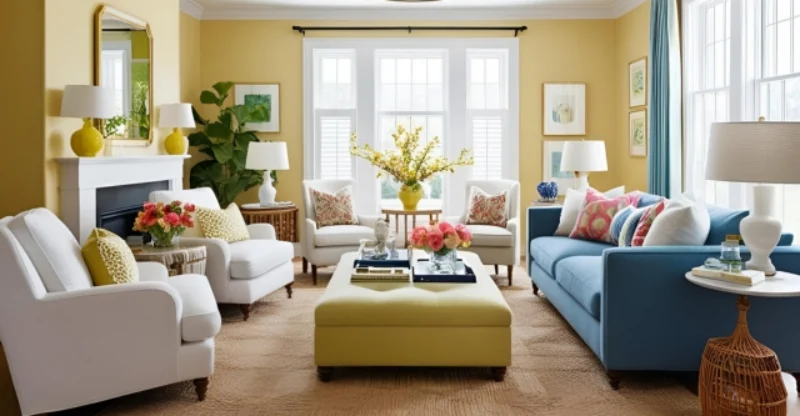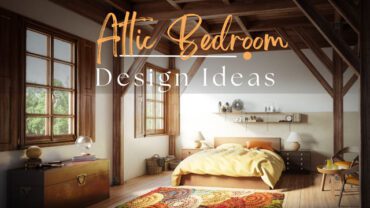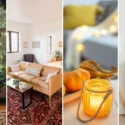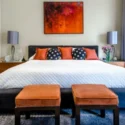5 Things Designers Instantly Notice in a Room
Have you ever walked into a room and felt something was just right? Or maybe something felt a little off? Interior designers have a special eye. They are trained to see things that most people might miss. When designers enter a space, their brains quickly scan for certain things.
Understanding what designers look for can help you see your own home in a new way. It can help you make small changes that have a big impact. Knowing these secrets can even help you find decorating ideas designers promise will work for years to come. Let’s look at the top five things designers notice right away. These insights can guide you in making your space feel more put-together and beautiful. Plus, focusing on good design can be one of the things that will add value to your home.
1. The Flow and Layout
First, designers notice how you can move through the room. This is called flow. Does the room feel easy to walk through? Or do you have to squeeze past furniture? A good layout makes a room feel comfortable and usable. Designers check if the furniture arrangement makes sense for how the room is used.
They look at pathways. Are they clear and wide enough? Imagine carrying a tray of drinks – would you bump into anything? The path from the door to the main seating area, or to a window, should feel natural and open. This is important in every room, from the living room to the bedroom.
Designers also consider how furniture pieces relate to each other. Is the sofa too far from the chairs for conversation? Is the coffee table the right size and height for the sofa? A good layout creates zones for different activities, like talking, reading, or watching TV.
The placement of large items, like sofas or beds, is key. They anchor the room. Designers check if these main pieces are positioned well. For example, is the bed placed against the best wall in a bedroom? Thinking about layout helps make the most of the space you have. Even knowing how to style a bedroom with carpet involves considering the overall room flow.
Poor flow can make a room feel cramped, even if it’s large. Designers instantly spot layouts that don’t work. They see blocked pathways or furniture that feels awkward. Fixing the flow is often the first step to making a room feel better.
2. Lighting, Both Natural and Artificial
Next, designers look at the light. Lighting is super important! It affects the mood and function of a room. Designers first check for natural light. How much sunlight comes in? Are the windows covered up too much? Natural light makes a room feel airy and bright.
Then, they look at the artificial lights. These are the lamps and ceiling fixtures. Is there enough light for different times of the day? Good design includes different types of lighting. This is called layered lighting. You need overhead light for general brightness, task light for activities like reading, and accent light to highlight things like artwork.
Designers notice if the lighting is balanced. Is one corner dark while another is super bright? They check the types of light bulbs used. Are they warm and cozy, or cool and harsh? The right light temperature can make a big difference in how colors look and how the room feels. Many experts offer expert advice on lighting design because it’s so crucial.
They also look at the light fixtures themselves. Do they fit the style of the room? Are they interesting to look at? Light fixtures can be like jewelry for a room. They add personality. A boring or outdated fixture can bring down the whole look.
Too little light makes a room feel gloomy. Too much harsh light can feel like an office. Designers know that getting the lighting right is key to a successful design. It’s one of the fastest ways to change a room’s atmosphere.
3. The Color Palette
Color hits you right away. Designers instantly read the room’s color story. What are the main colors used? Are they bold and bright, or soft and calm? The color palette sets the mood. Warm colors like red and yellow feel energetic, while cool colors like blue and green feel relaxing.
Designers look at how colors are used together. Do they clash or do they work well? They check the balance. Is there too much of one color? Is there a good mix of main colors, secondary colors, and accent pops? A well-planned palette feels harmonious.
They also consider how color flows from room to room if they can see other spaces. Does the color scheme feel connected throughout the home? This creates a sense of unity. Understanding color psychology in homes helps designers choose shades that evoke the right feelings.
The quality of the paint job is also noticeable. Are the lines clean? Is the finish even? Little details like this matter. Color isn’t just on the walls. Designers look at the colors in furniture, rugs, curtains, and accessories too.
A messy or unplanned color scheme can make a room feel chaotic. Designers can quickly tell if the colors were chosen thoughtfully or just happened by accident. A strong color palette is a sign of intentional design, whether it’s a neutral scheme or something more vibrant like you might find in Boho bedroom decor ideas.
4. Scale and Proportion of Furniture
Scale means the size of things. Proportion means how the sizes of different things relate to each other. Designers have a keen eye for whether the furniture is the right size for the room and for the other pieces in it. A huge sofa in a tiny room looks wrong. A tiny lamp on a big table also looks off.
Designers check if the main furniture pieces fit the room’s scale. In a room with high ceilings, you might need taller furniture or large artwork to make it feel balanced. In a small room, smaller, lighter-looking furniture often works better.
They also look at how furniture pieces relate to each other in size. Is the coffee table proportional to the sofa? Are the end tables the right height for the chairs next to them? When scale and proportion are right, the room feels balanced and comfortable.
This applies to accessories too. A tiny rug floating in a large seating area looks lost. Artwork hung too high or too low, or that’s too small for the wall, disrupts the balance. Designers notice these details immediately.
Getting scale and proportion right takes practice. It’s easy to buy furniture you love, only to find it doesn’t quite fit the space or the other items you own. Designers are trained to see these relationships and create arrangements where everything feels like it belongs together.
5. Personal Touches and Details
Finally, designers look for the things that make a room unique. What tells the story of the people who live there? These are the personal touches and details. This could be artwork, photos, collections, or unique objects. These items add personality and warmth.
Designers notice if a room feels lived-in and loved, or if it feels generic like a hotel room. They look for signs of individuality. Are there books on the shelves? Plants by the window? Interesting pillows or throws? These details make a house feel like a home.
They also look at the quality of the details. Are the pillows plump or flat? Are the curtains hanging nicely? Is there clutter, or are things organized? Sometimes, knowing which are the items professional organizers say to replace can help keep these details fresh. Small things like worn-out cushions can detract from the overall look.
Designers appreciate thoughtful styling. How are items arranged on a coffee table or bookshelf? Is there a mix of textures and shapes? Good styling adds layers and interest. It shows care and attention.
A room without personal touches can feel cold or unfinished. Designers look for that spark of personality that makes a space special. It’s these details that truly complete a room and reflect the people who inhabit it.
Conclusion
So, there you have it – the five things designers instantly notice: flow and layout, lighting, color palette, scale and proportion, and personal touches. They see how easily you can move around, how light shapes the mood, how colors work together, if furniture fits the space, and what makes the room uniquely yours.
Thinking like a designer can help you improve your own home. Look at your rooms with fresh eyes. Check the flow. Adjust the lighting. Think about your colors. See if your furniture feels right-sized. And don’t forget to add details that show off your personality. Making even small tweaks in these areas can make a big difference in how your home looks and feels. Good design is about creating spaces that are not only beautiful but also comfortable and functional for you.



